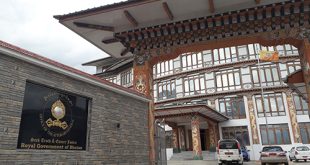Bhutan’s hydropower sector, which drives the national economy, is facing increasing risks from floods and Glacial Lake Outburst Floods (GLOFs). The National Center for Hydrology and Meteorology (NCHM)’s 2025 flood hazard maps have highlighted serious threats across river basins such as Amochhu, Punatsangchhu, and Thimchhu, where key hydropower projects are located.
To strengthen resilience, Bhutan secured USD 40 million (mn) Catastrophe Deferred Drawdown Option (Cat DDO) from the World Bank in December last year. This facility provides quick access to funds in the event of natural disasters. The Department of Energy has already revised hydropower design guidelines, requiring all new projects to include dam safety measures and integrated geohazard risk assessments. The 1,125 MW Dorjilung project will be the first to adopt a Disaster Risk Management Action Plan.
Existing projects, such as those operated by Druk Green Power Corporation and Dagachhu, have also prepared emergency response plans, with regular mock drills to test readiness for flash floods and GLOFs. These measures aim to safeguard ongoing operations while reducing risks posed by unpredictable natural hazards.
NCHM is also expanding flood and GLOF early warning systems. The Amochhu basin system, operational since 2020, is being upgraded into a comprehensive monitoring network, while systems for Thimchhu and Parochhu became operational in December 2024 with Japanese support. Older systems in Punatsangchhu, Mangdechhu, and Chamkarchhu are set for upgrades under the 13th Five-Year Plan.
At the same time, awareness programs and mock drills are being conducted in vulnerable areas. Relocation of at-risk households in Lunana has already begun, while urgent attention is being given to Thorthormi Lake, which is in a critical state. Authorities stress that GLOFs cannot be prevented but preparedness and vigilance are essential to protect communities and safeguard Bhutan’s hydropower backbone.
 The Bhutanese Leading the way.
The Bhutanese Leading the way.




